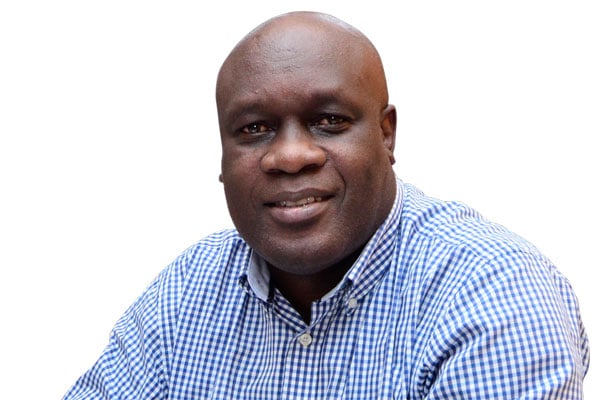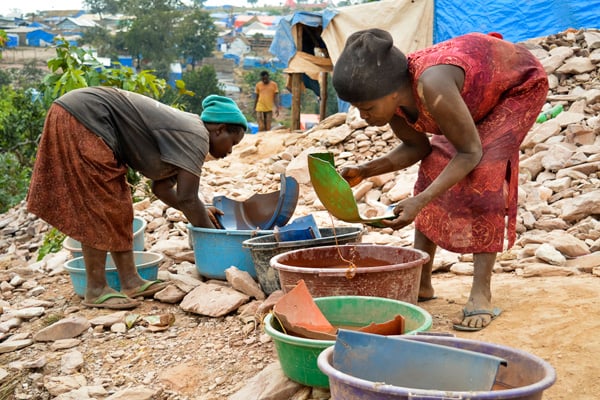Prime
Katumba attack: Media walk a tightrope in reporting grief

Author: Odoobo C. Bichachi is the Nation Media Group (NMG)-Uganda public editor. PHOTO/FILE.
What you need to know:
- Mr Odoobo C Bichachi says: It was absolutely unnecessary to get into lurid details of very painful moments for Gen Katumba ...
The attack by unknown gunmen on former army commander Gen Katumba Wamala’s vehicle midweek that ended in the tragic death of his daughter and driver has received extensive coverage in the media – mainstream and social media.
In fact the first reports of the incident were captured and shared by citizen journalists on social media before being picked up by the mainstream media. A video of his bodyguard, and later himself returning to the bullet-ridden car they had miraculously escaped from amid a volley of bullets, and a boda boda rider rushing him to hospital was the most graphic account of the incident.
Journalists cover life and death every day. In this particular case, only the other day, the media was covering the colourful moment of Gen Katumba taking oath as MP in the 11th Parliament accompanied by his now deceased daughter Brenda Katumba. Barely a week later, is the same media covering the bloody moment of his brush with death and the demise of his daughter Brenda.
Thus from the photos of an elegant General adorned in military ceremonial dress holding hands with his equally smartly dressed 32-year-old daughter, we have quickly – and sadly – moved to photos of a blood-soaked General writhing in pain from a bullet wound and crying for the loss of his daughter. It is the irony and tragedy of life. My heart goes out to him and his family.
I was prompted to reflect media coverage of grief by two complaints from readers about our stories – both published by Daily Monitor online. One was in reference to the story headlined, “Gunmen kill Gen Katumba Wamala’s daughter, driver in assassination attempt”. The reader was specifically concerned with the stand-fast that read: “Images circulating on social media showed Gen Wamala with his mouth open, in apparent distress beside the car in which his daughter Brenda…”
The reader’s question was whether Daily Monitor “had to describe the mouth being open; wasn’t saying ‘distress’ enough?”
The other was a video captioned: “Gen Katumba Wamala views the body of his deceased daughter…shortly after arriving for the vigil at his home in Najjera”. The reader wondered whether it was ethical for Daily Monitor to intrude into what should have been a very private moment of grief, including showing him gesticulating in pain and frustration.
There are no fast and clear-cut answers to these queries in part because the events of Wednesday are a matter of great public interest and the General is a public figure. However we are all human and grief affects us all whether poor or rich, powerful or not and empathy is a universal value that ought to cut across all our social or political differences, especially in moments like this.
Our journalists are guided by the code of ethics and NMG editorial policy guidelines in moments like this. The specific provision states: “In cases involving personal grief or shock, enquiries and approaches must be made with sympathy and discretion and publication handled sensitively. These provisions should not restrict the right to report legal proceedings.”
In light of the above, were the two referenced stories approached with sensitivity? Perhaps not. It was absolutely unnecessary to get into lurid details of very painful moments for Gen Katumba in spite of the supposed public thirst for information on the incident. Yes, at times like this, journalists walk a very delicate balance of informing the public and respecting the privacy of the bereaved.
I found the guidelines in the Society of Professional Journalists Code of Ethics quite illuminating on this matter (www.spj.org/ethics-papers-grief.asp). It says:
“Journalists often advance their “right” to seek information and record events, and stories of grief and tragedy are a staple of community news. The SPJ Code underscores the accompanying “responsibility” with common-sense principles:
-Show compassion for those who may be affected adversely by news coverage.
-Be sensitive when seeking or using interviews or photographs of those affected by tragedy or grief.
-Recognise that gathering and reporting information may cause harm or discomfort.
-Recognise that private people have a greater right to control information about themselves than do public officials.
-Show good taste. Avoid pandering to lurid curiosity.
It is certainly within journalists’ purview — some may even argue obligation — to report news of tragedy and grief. Citizens expect to see these stories. Most important, journalists have a responsibility to report these stories in a careful — not careless — fashion.”
Send your feedback/complaints to
[email protected] or
call/text on +256 776 500725.



